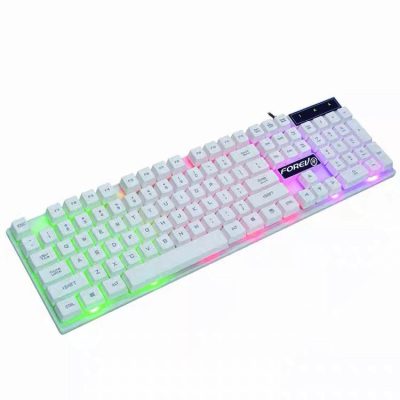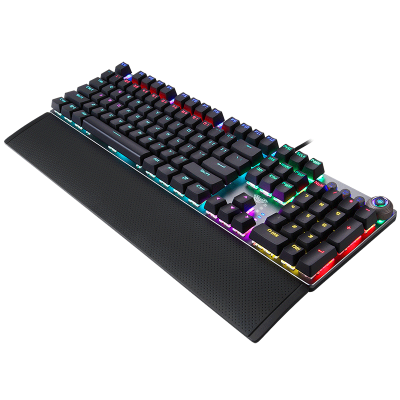The previous keyboards were almost all mechanical keyboards, or more precisely, mechanical contact keyboards. This kind of keyboard used electrical contact touch as a joint mark, and a mechanical metal spring as an elastic mechanism. The feel of this keyboard is hard, the key stroke is long, and the key resistance is easy to change.
However, two drawbacks of mechanical contact keyboards are that the mechanical springs are easily damaged, and the electrical contacts can oxidize after prolonged use, causing the keys to fail. Therefore, after the 1990s, the mechanical contact keyboard gradually withdrew from the stage of history.
In the beginning, it was replaced by an electromagnetic-mechanical keyboard. The electromagnetic mechanical keyboard is still a mechanical keyboard, but it is different from the mechanical contact keyboard in that it does not rely on mechanical force to connect two electrical contacts, but encloses the electrical contacts in a miniature potentiometer. , a magnet is placed at the bottom of the button, and the current is connected through the magnetic force.
Compared with the mechanical contact keyboard, the electromagnetic mechanical keyboard has a much longer service life, but it still cannot solve the problem of simple damage to the mechanical moving parts inherent in the mechanical keyboard, so the electromagnetic mechanical keyboard has not survived in the market for long. , was quickly replaced by the touchless keyboard that appeared in the late 80s.
Therefore, non-touch keyboards are relative to the previous “touch keyboards”. Unlike “touch keyboards”, they do not rely on the mechanical connection of conductive contacts to obtain key signals, but The key signal is obtained by relying on the change of the electrical parameters of the key itself. Because it does not require mechanical touch of the contacts, its service life can be much stronger.
The main non-touch keyboards are resistive and capacitive. Among them, capacitive keyboards are more widely used because the process is simpler and lower cost. Compared with the mechanical keyboard, its two features are the use of elastic rubber springs to replace the mechanical metal springs, and at the same time, the electrical connection of the mechanical keyboard is transferred to the change of the distance between the two capacitors at the bottom of the keys and the bottom of the keyboard. The capacitance changes to obtain the signal of the button.









